AUGUSTA, Ga.—For a tournament as steeped in tradition as The Masters, it’s always been one of golf’s innovators when it comes to new technology.
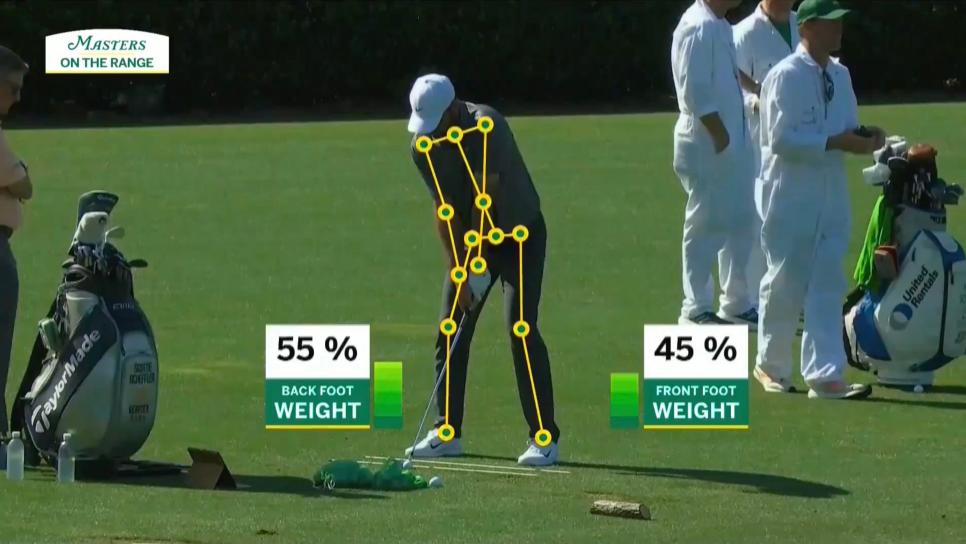
We saw one of those during the “Masters On the Range” broadcast on Monday. While World No. 1 and tournament favorite Scottie Scheffler hit balls on the driving range, CBS employed its Optimotion technology. In doing so, it dispelled one of the most common golf swing misunderstandings around. And one the rest of us can learn from.
Optimotion is a 3D system, powered by GolfTec, which is a new addition to CBS’ 2024 broadcast and made its first appearance at the Masters on Monday. The system tracks and measures different segments of golfers’ bodies as they swing, which allows teachers to pinpoint different areas they want to improve.
One of those measurements projects a golfer’s side-to-side weight shift as they swing, which led to some useful learnings when the broadcast peaked under the hood of Scheffler’s move.
Start close to 50-50
At setup, the system found Scheffler’s weight was pretty evenly distributed between both legs: A little more than half his body weight on his right leg; a little less than half on his left.
Max weight shift (it’s earlier than you think)
About halfway through his backswing, Scheffler shifts more than 60 percent of his weight onto his trail leg on the backswing. This, it turns out, is his maximum amount of weight shift onto his trail leg.
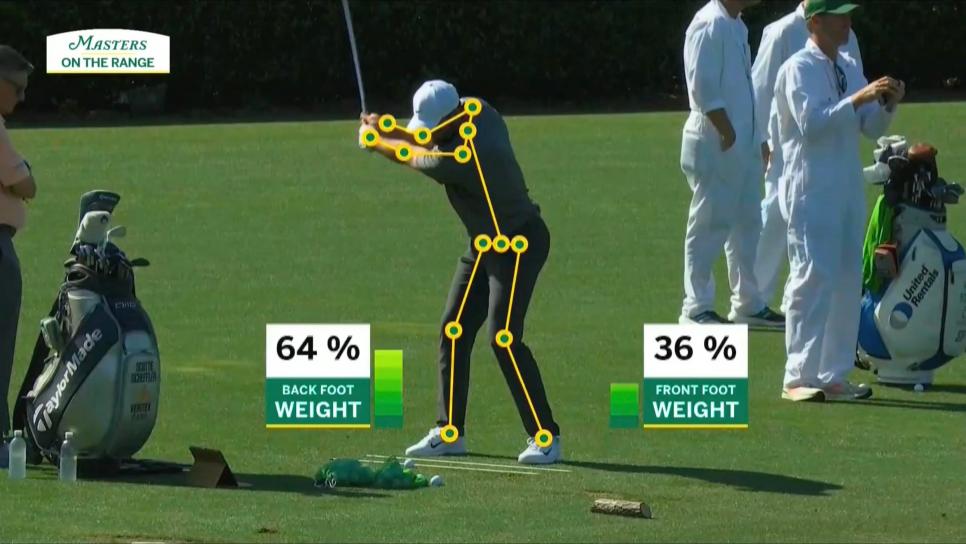 The Key Move: Recentering
The Key Move: Recentering
As Scheffler reaches the top of his backswing, his weight has begun moving back to his front leg: Whereas just 36 percent of Scheffler’s weight was on his left leg mid-backswing, now almost 50 percent of his weight sits on his left leg at the top of his backswing.
Herein lies the learning:
Many golfers think they need to have most or all of their weight on their trail leg at the top of the backswing. While shifting your weight back is a powerful move, many amateurs slide their weight over to their trail side too late, and never come back as a result. They hit chunks, thins, and make other contact errors because of it.
As Scheffler shows here, pros shift over to their left side far earlier in the backswing than you might expect. It’s a move called re-centering, and it’s essential to a good weight shift in the golf swing.
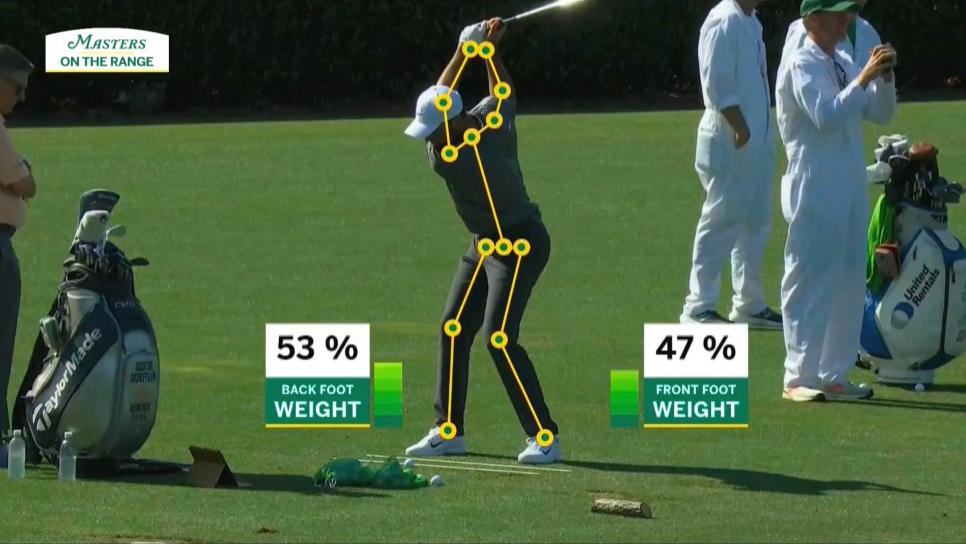 Weight moves aggressively forward
Weight moves aggressively forward
By mid downswing, Scheffler now has a majority of his weight back on his lead leg.
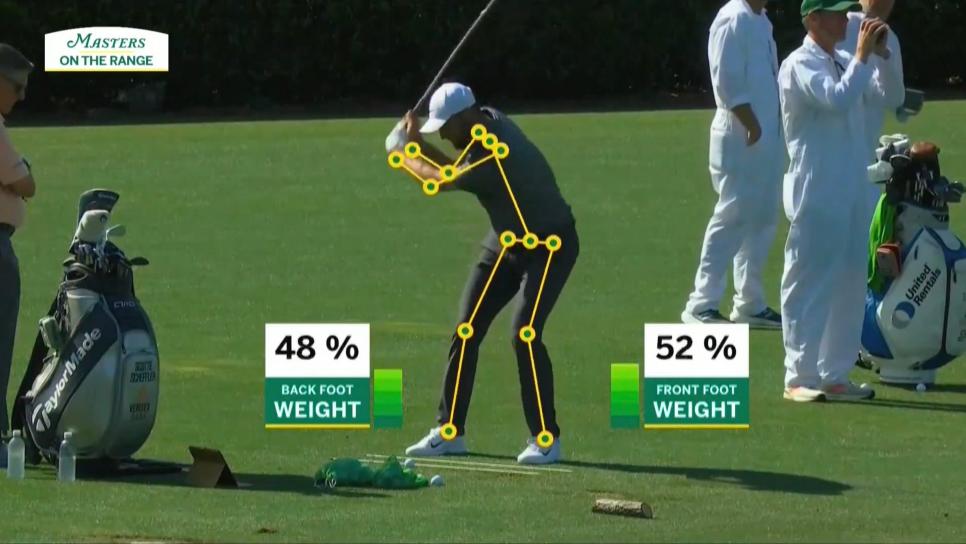
By impact, he’s shifted more than 73 percent of his weight onto his lead side
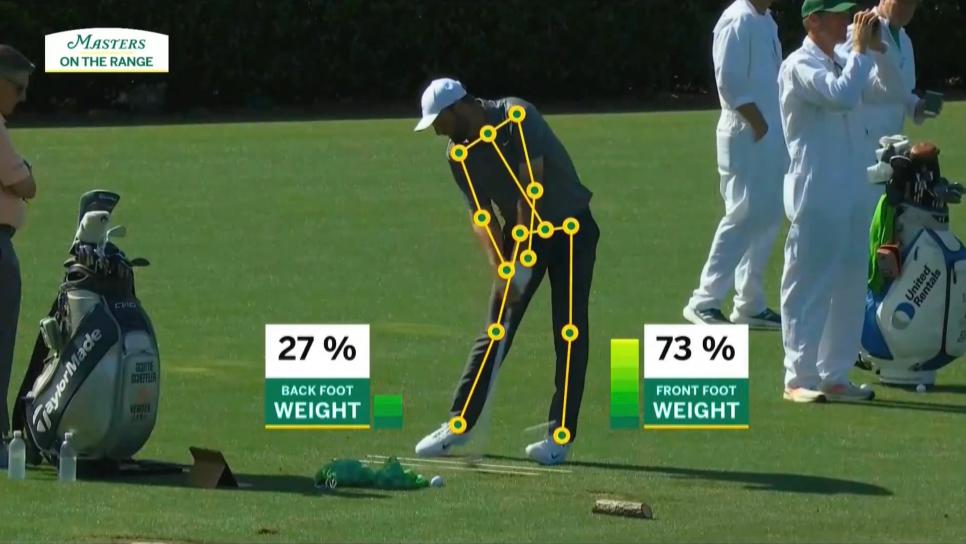
…which continues through to his finish.
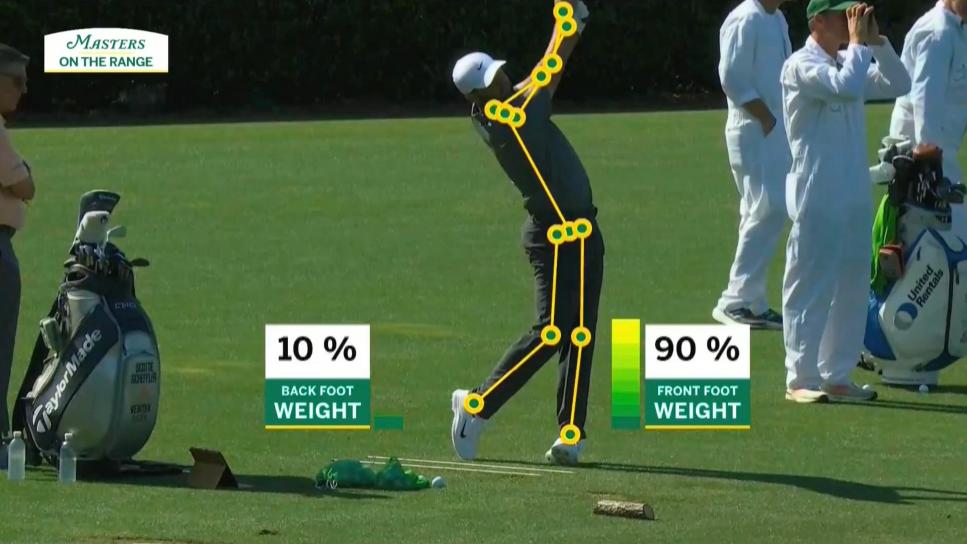
An aggressive weight shift from right-to-left through the ball, which is only possible because he starts early.
What you can learn
The feeling, as Padraig Harrington explains here, is the feeling of taking a big step towards the target halfway through your backswing. Essentially, stepping toward the target as soon as you start your golf swing.
As he explains:
1. During your takeaway, you should feel your weight shift back to your trail leg.
2. As the club shaft reaches parallel to the ground, that’s when you should begin to “recenter”, and shift back to your lead side.
3. As you begin your downswing, you should have generated so much momentum that you could easily step through the ball, towards the target.
The feeling should be that of stepping side-to-side, or like a pitcher striding forward with their lower body as they’re winding up with their upper body. By the time they release the pitch, their weight has already fully transferred towards the batter, which provides them power.
Adopting the same move in the golf swing can do the same thing. It can promote ball-first contact for more solid strikes and help generate speed when you do.
This article was originally published on golfdigest.com



